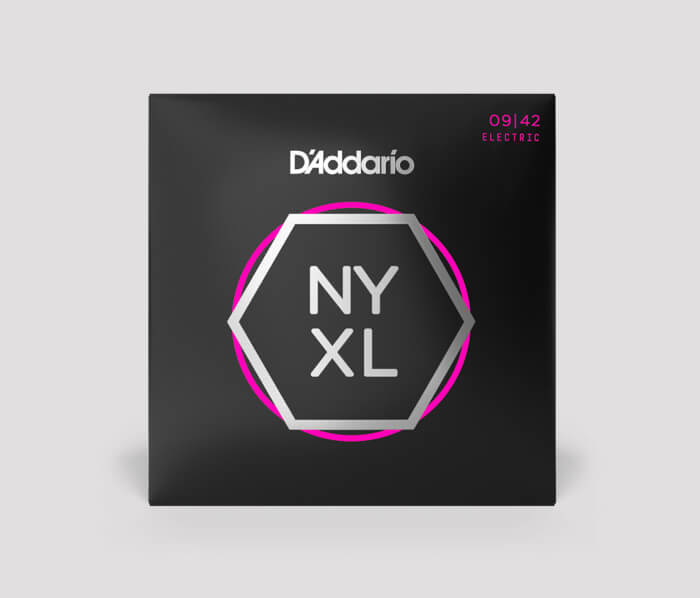String tension often gets overshadowed by string gauge. But understanding string tension is just as valuable to finding the best string set for you and thus playing your best.
String tension is what the name implies—how tight the strings are. It's measured in pounds (or kilos if you're across the pond). If you've played a few different guitars, presumably with a few different string sets on them, you may have felt the difference in tension. Sometimes, strings feel like they are stiffer or more resistant. Other times, they seem to vibrate slightly less intensely and bend farther with ease. This is string tension in action.
To determine what string tension works best for you, like many other aspects of strings, you'll probably need to experiment with a few different tensions. D'Addario makes it a point to have string tension available on some string packaging, as well as on ecommerce product pages. While that can tell you the actual string tension, a little additional technical info can help you understand what string tension is and how it varies.
WHAT IS STRING TENSION?
String tension is a function of three aspects: string gauge, scale length, and pitch. String gauge refers to the thickness of the strings. Scale length is a measurement of the distance of a vibrating string on a given instrument—usually this means it’s measured from the nut to where the string contacts the bridge or tailpiece. Pitch refers to the note/sound the string is tuned to (or intended to be tuned to).
HOW STRING GAUGE AFFECTS STRING TENSION
Typically, heavier gauges of strings also give you increased string tension when tuned to pitch. If we compare 9-42 strings and 11-52 strings, when both are tuned to the same pitch, the 11s will have a greater string tension than the 9s.
DIFFERENCES IN PITCH CHANGE STRING TENSION
Similarly, if you compared the tension of a set of 11-52 gauge strings when they are tuned to E standard, to the tension of the same strings tuned to Eb, you’d find that in Eb tuning, they have less tension. This makes sense, considering you detuned, or loosened the strings, to get them a half step down to Eb.

THE LONGER THE SCALE LENGTH THE GREATER THE STRING TENSION
The last of the three major factors, scale length, operates in essentially the same way. The longer the scale length, the greater the tension. The tension of the same set of strings, tuned to the same pitch, will change on guitars with different scale lengths. For example, a set of D’Addario NYXL 9-42 strings tuned to E standard, will have a greater string tension if they are on a Fender Stratocaster with a 25.5” scale length, than on a Gibson Les Paul with 24.75” scale length.
 BALANCED TENSION STRINGS
BALANCED TENSION STRINGS
As you may have gathered, string tension will be different for every string in a set. This is because there are different gauges within a set and each string is tuned to a different pitch (though they'll likely have the same scale length across all the strings). While this is normal, D'Addario has also engineered balanced tension string sets, where the deviation in tension between strings in the set is very small (usually within 1 lb.). This creates a different feel and playing experience, but one which some players find more desirable.
Now that you understand string tension, look at the tension of strings you're playing and take notice of the feel when you play—trying a new tension could change your whole technique!




